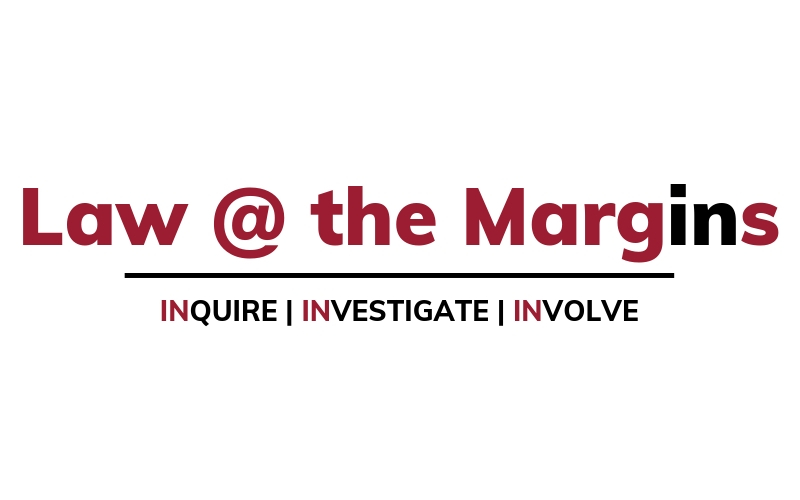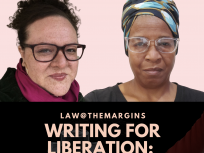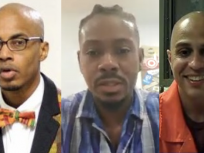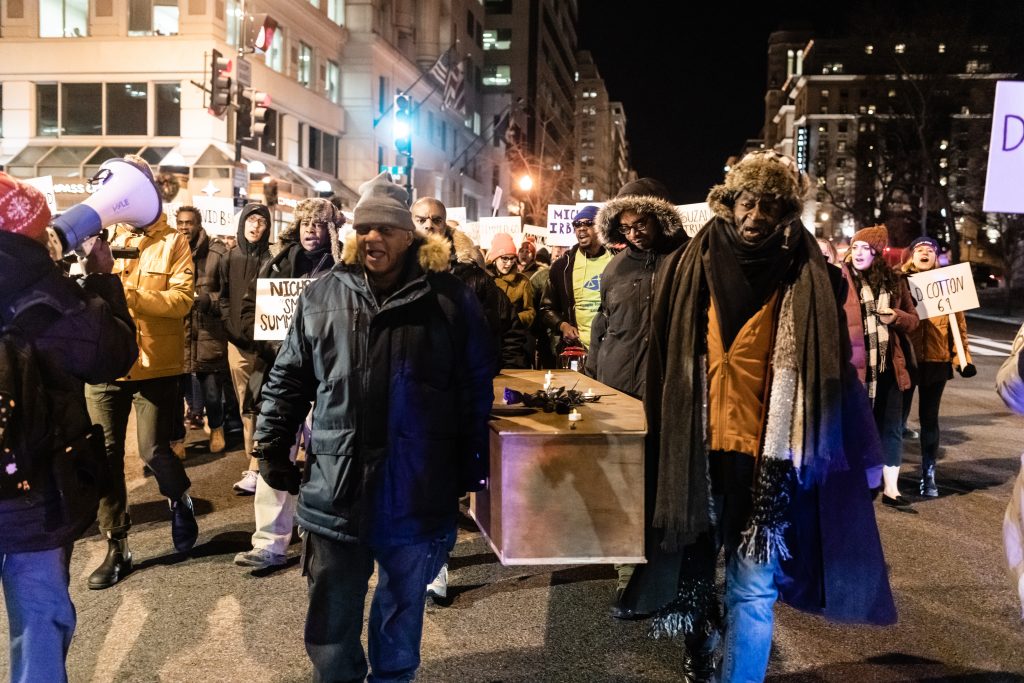
There is a way out of America’s homelessness crisis. It starts by meeting the homeless where they are with daily outreach and ends with access to affordable, permanent housing.
By Joseph Young and Robert Warren
Editor’s note: This story was produced in partnership with Street Sense Media, a street media paper in Washington, D.C., and is part of “The Right to a Home,” a Community Based News Room (CBNR) series that examines homelessness issues across the United States. CBNR is a project of Law@the Margins, and the series is supported by a Solutions Journalism Network grant.
WASHINGTON, D.C. — Henry Wilson, 46, awoke to the sounds of Washington, D.C., police officers scuffling by his tent in the M Street NE pedestrian underpass on this summer night. A woman’s body lay on the sidewalk in front of the tent parked next to Wilson’s.
None of the other people living in the homeless encampments that have sprung up in the NoMa neighborhood seemed to know much about the deceased woman now covered in a white sheet. Wilson, her neighbor, only knew that she went by the name Tink.
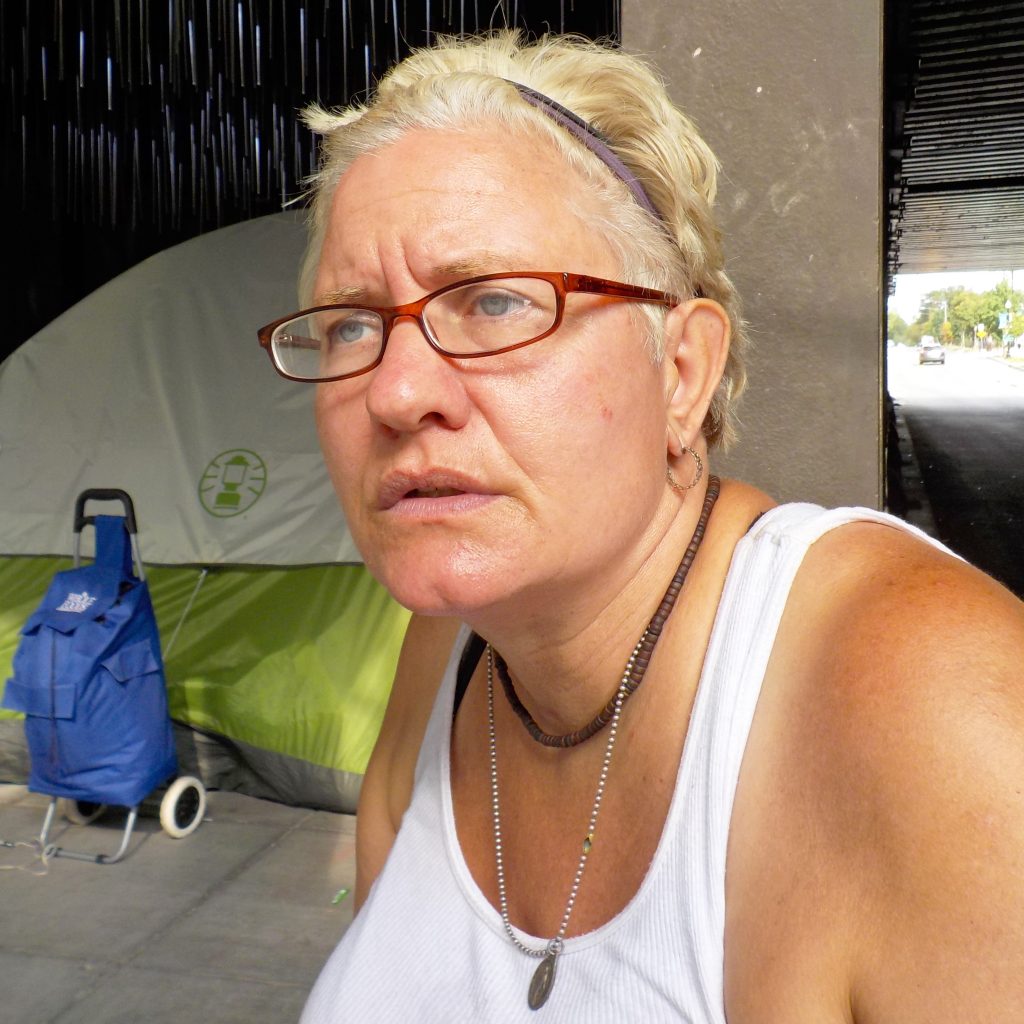
Michelle Hydier, 52, who has been living at the M Street underpass for the past six months assumed this woman died from a drug overdose.
“They could send drug counselors here,” Hydier said. “If the city was supportive of [people with substance use disorders], I think that would eliminate the problems they are having.”
Hydier has bouts with schizophrenia. So does her friend, Ricky McNeill, whom she shares a tent with.
In the NoMa neighborhood, the underpasses at K, L, M and First Streets shelter just a fraction of the more than 600 homeless people living on the street — out of the 6,521 people experiencing homelessness in Washington, D.C. — including McNeil, Hydier and Wilson.
McNeill, 46, also has a bipolar disorder. He has been homeless since the age of 14 and self-medicates with illegal substances. “He is just hurting himself,” Hydier said.
Hydier wants the city to do more. She said the city has failed to provide mental health services to those living at the homeless underpass encampment.
Of all “unaccompanied adults” counted as homeless in D.C. by the Metropolitan Washington Council of Governments in January 2019 — sheltered or not — 30 percent had a history of mental illness and 20 percent had a history of substance abuse.
However, a Street Sense Media survey of 25 NoMa encampment residents at the K, L, M and First Streets NE underpasses found that 52 percent of respondents reported a problem with drugs, such as K2, PCP, marijuana, heroin, cocaine and ecstasy. Of that 52 percent, approximately 31 percent had a problem with more than one type of drug.
A staggering 80 percent of the encampment residents surveyed reported having a diagnosed mental illness, including schizophrenia, ADHD, anxiety, PTSD, depression and bipolar disorder.
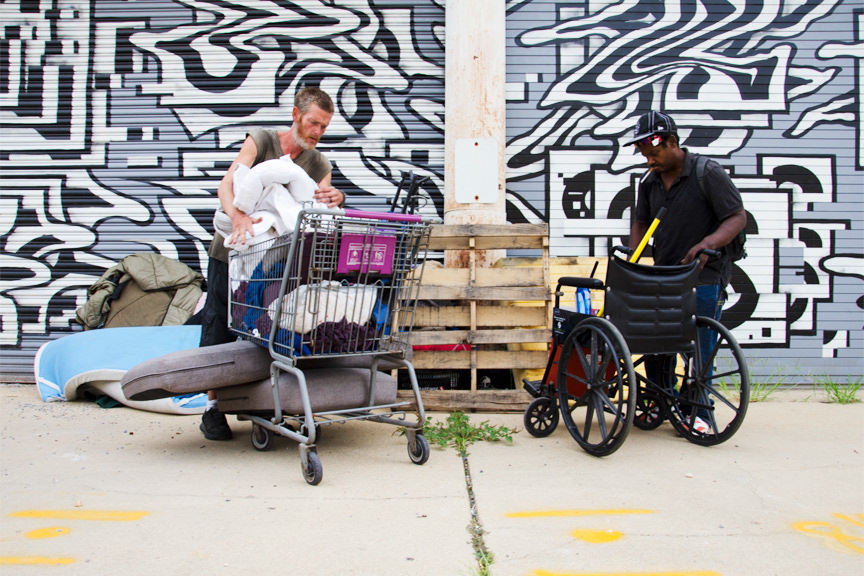
“Some of the people that are mentally ill should be getting medication, and they are not getting those services,” Hydier said. “That causes a problem in the encampment.”
The Department of Behavioral Health (DBH) in the District of Columbia is listening. It also has the financial resources from the District to act and is implementing an action plan to better serve the needs of individuals who are experiencing homelessness. In 2019, the budget for DBH was $285 million, a $7 million, or nearly 3 percent, increase from 2018 (after adjusting for inflation). In 2020, the proposed budget is $319 million, a 10 percent increase. A lot of that money is going toward outreach services, such as the DBH Community Response Team (CRT), which is a new 24-7 direct service team that includes homeless outreach, mobile crisis, and pre-arrest diversion.
“We had three different programs that merged and then expanded,” said Jordan Gulley, the homeless services coordinator at the Department of Behavioral Health. “We had our mobile crisis, which responded to the crisis concerns throughout the community. We had the homeless outreach program, which did outreach in the community and tends to work specifically with people with more complex behavioral health issues. And then our pre-arrest diversion programs, which identify individuals through low-level offenses that might be directly related to behavioral health concerns. And rather than arresting them, they will be diverted into the pre-arrest programs. The community response team is a merger of [those] three existing programs that were at DBH and then expanding our services.”
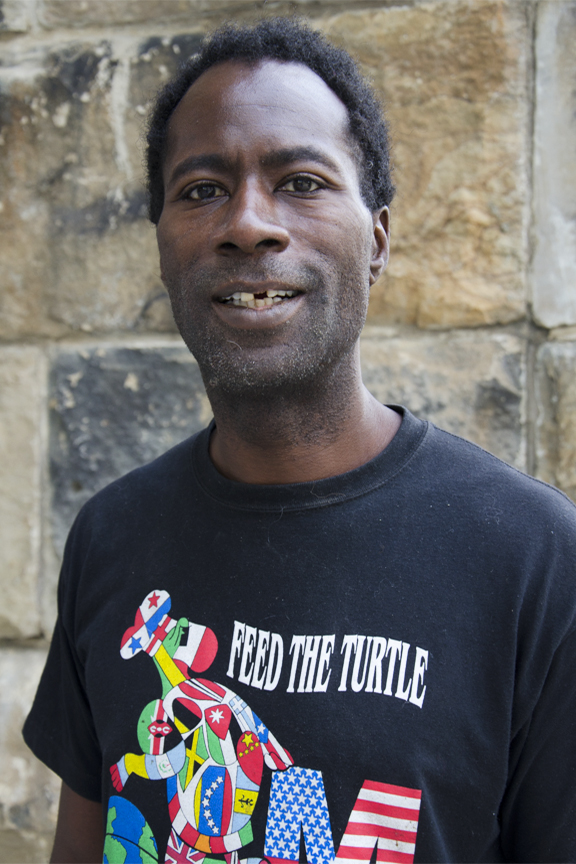
The response team does active outreach into the community to identify individuals living on the streets who need help with health concerns, mental health issues, substance abuse problems, and they actively engage with them.
“We try to get them connected to resources, determine the level of care of service that they might need and then kind of facilitate that connection,” Gulley explained. “There’s a lot of money toward homeless outreach services that are run through DHS [Department of Human Services]. So there’s a lot of coordination between teams right now, a lot of boots on the ground trying to really work with individuals who are experiencing homelessness on a gamut of services.”
This robust collaboration has all come together and grown over the past year, and in earnest since June. The first full alert of the season for the Community Response Team was a week before Christmas.
“I worked until 5:45 this morning, from about seven,” said Gulley. “But with our team, we have three shifts so that we have 24-hour coverage. There are always people in the community. We are doing community outreach as well as crisis response.”
Getting People Into Permanent Supportive Housing First
The Department of Behavioral Health is not the only organization responding to the needs of the community and connecting people to services. Pathways to Housing DC is on a mission to end homelessness through housing first and serves more than 3,500 adults each year who are experiencing homelessness or at risk for homelessness.
Since 2004, when the nonprofit organization was founded, Pathways has moved over 900 people into its permanent housing program, with 92 percent of them remaining in its housing program and 100 percent of the people its serves overcoming mental illness, substance use or severe health challenges.
“Some people just need more support. … It’s really hard to work toward any type of concrete goals without the stability of housing,” said Emily Hill, a program manager for Pathways to Housing DC and former outreach specialist.
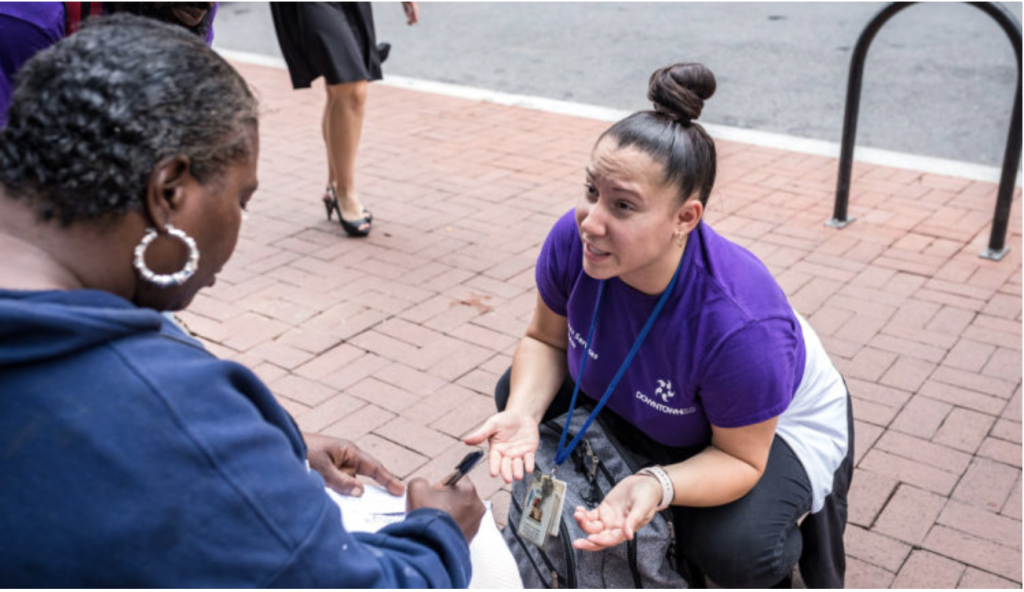
The nonprofit receives multiple contracts from city government to provide street outreach and housing. It is a branch of the national organization founded by Sam Tsemberis, who pioneered the housing first model by documenting how much more expensive it is to pay for emergency services for people on the street than it is to pay for housing and supportive services.
“When working with a population that has dealt with so many difficult things throughout their lives, it may be the first time they’ve had their own apartment in a long time or ever. And, really, that type of stability takes a lot of assistance,” Hill said. “That’s why PSH [permanent supportive housing] is so valuable, because the caseworker works with the consumer to be successful and maintain their housing, which we believe is a human right. The amount of support an individual needs is always different. Some people might need help setting up their utility payments. Or they might need help doing meal prep, things like that. Also being a resource for them if they need more intensive services, such as mental health resources.”
The local government of Washington, D.C., formally adopted this “housing first” approach to homelessness in 2008, which focuses on housing people before requiring them to be employed, sober or on medication.
“We need to improve access to housing for vulnerable individuals and families by ensuring we fund Permanent Supportive Housing programs that use a Housing First model,” states the city’s most recent strategic plan to end homelessness. “Some programs within our system have so many eligibility requirements that we are unable to place into permanent housing the very individuals and families that the programs were funded to serve.”
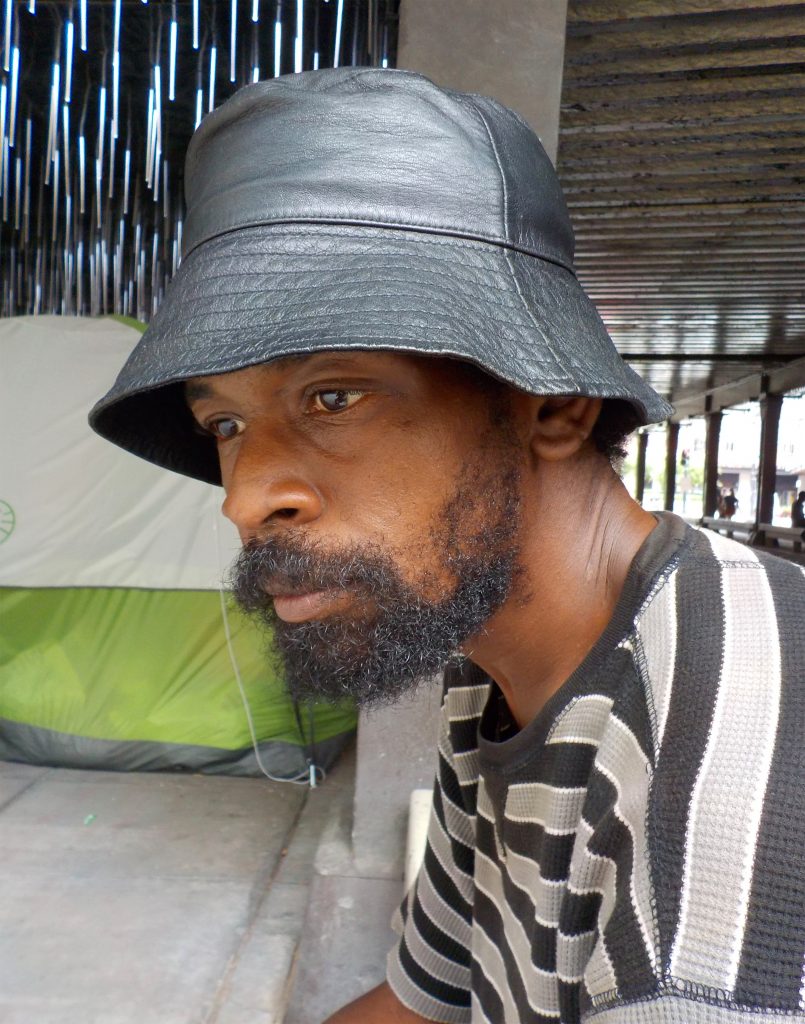
Aaron Howe, a Ph.D. candidate and teaching assistant at American University in the department of anthropology, is passionate about ending homelessness. Howe has been attending homeless encampment cleanups about twice a week for over a year and knows many homeless residents and people at the organizations working with them, including the Washington Legal Clinic for the Homeless (which provides legal services to the homeless) and Bread for the City (which provides food). He has done a lot of research, including interviews, on the government and private agencies like the Department of Health and Human Services and the NoMa Business Improvement District (BID) and would like to see the city do more to create humanzing solutions that work.
“Of course, non-punitive drug rehabilitation or maintenance, as well as mental health services for those who want it, should be provided,” Howe said. “I believe, however, that housing must be the first step.”
Everyday people in the community agree. “There’s not enough affordable housing in the city,” said Antonio Haskell, 82, who rides the NoMa-Gallaudet U Metro. “Being on the street is not healthy. It’s not safe.”
There are some positive signs. According to a Metropolitan Washington Council of Governments report, the 2019 annual Point in Time (PIT) count of homeless people in the D.C. metro region was 9,794, the lowest number of people counted as homeless since the count began in 2001. It also was the first time that the number of homeless has been below 10,000 people.
One reason cited for the decline in homelessness was the region’s increased supply of permanent supportive housing. This year, 10,856 formerly homeless persons were counted in permanent supportive housing, a 2 percent decrease from 2018. But between 2015 and 2019, the region added 2,226 permanent supportive housing beds to its year-round facility inventory, a 26 percent increase since 2015.
For the fiscal year that began in October, the local budget includes the largest one-year investment in permanent supportive housing for single adults in Washington, D.C.’s history, according to advocates with The Way Home Campaign. It’s enough to provide PSH for 615 additional individuals and 180 more families.
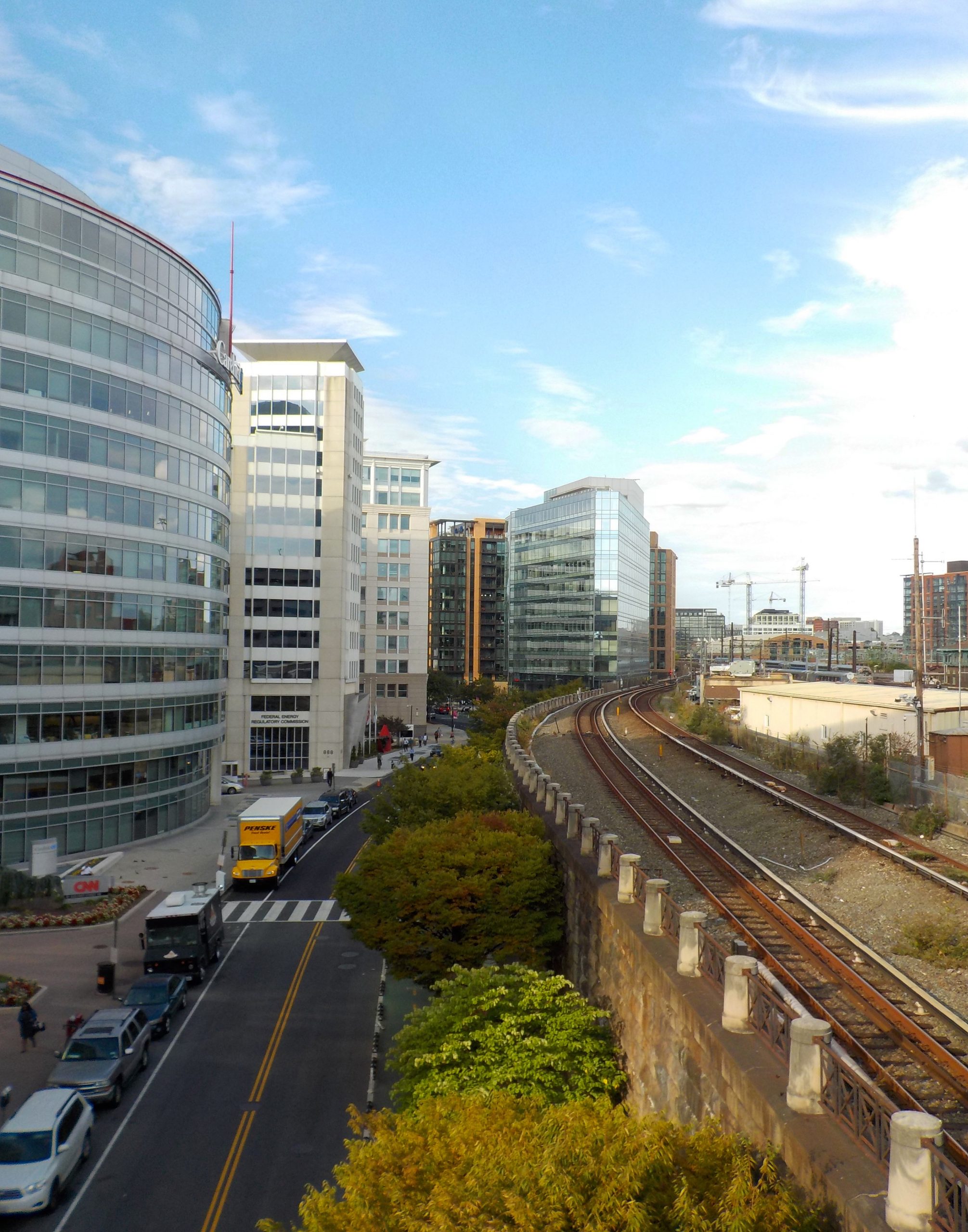
The campaign also celebrated investments in street outreach, which includes supporting the largest outreach team Pathways DC has ever had to meet people where they are and help them pursue housing and any other services. Shifting priorities at the federal level were going to reduce street outreach funds based on previous budgets, but instead, Pathways now has a brand-new outreach team funded by the D.C. Department of Human Services.
The approved budget includes $15.9 million in new funding to provide PSH to 586 individuals. This is just one-third of the estimated need of 1,644 slots, and it is just 59 percent of the target of 986 slots set by The Way Home campaign, according to the D.C. Fiscal Policy Institute.
“We’re taking a step in the right direction, but obviously we’re not able to get there yet,” Hill said. “We’ll get more data in 2020 in terms of how many people are experiencing homelessness. With the numbers [homeless people] being in the thousands and the number of [PSH] vouchers being in the hundreds, it’s clear we need more [investment].”
Three percent of the city’s budget goes toward housing programs, according to the D.C. Fiscal Policy Institute. A report from the nonprofit think tank shows the city’s FY2020 budget includes $291.3 million for its main housing programs, while the District’s general fund for FY2020 was $9.9 billion, up $780 million from FY2019.
These resources are well spent. In 2015, The Advisory Board Company, an international health-care consulting firm headquartered in Washington, D.C., found that the average annual cost to provide emergency services such as emergency-room visits, ambulance rides, police interactions and in-patient hospital stays to chronically homeless people is $40,000 per person. The average annual cost to provide permanent supportive housing — including professional case management — is $20,500. According to 2015 HUD data cited in an Urban Institute report, rapid rehousing cost about $10,000 per family per year, or half the cost of permanent supportive housing.
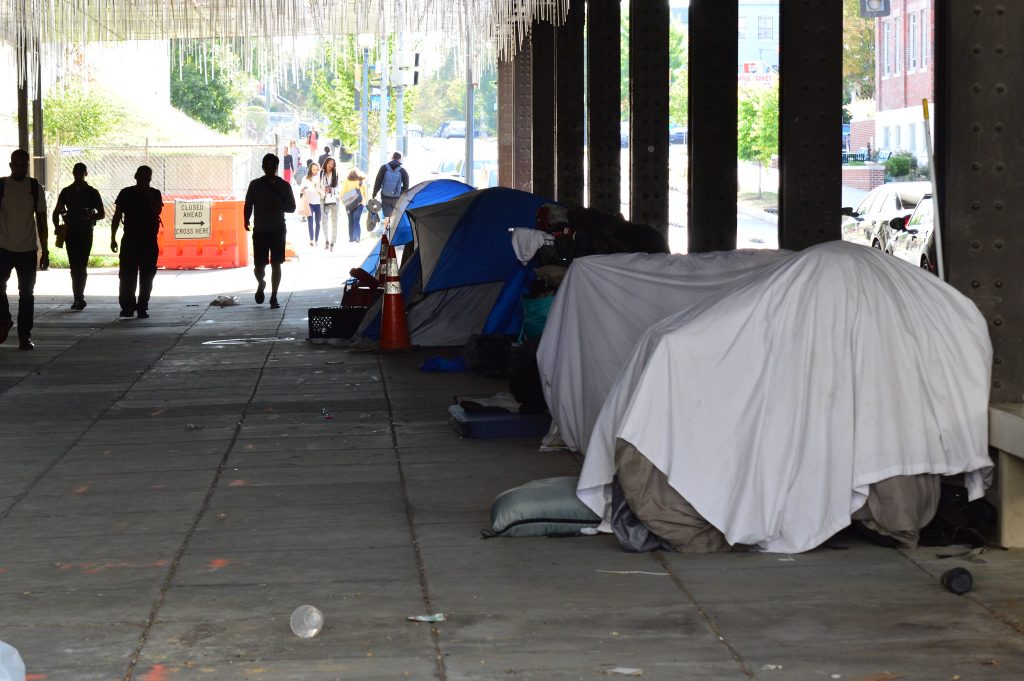
That is a lot of savings on emergency services, but when you compare PSH to other programs that don’t include supportive services or are not permanent, such as rapid rehousing, other programs can be less than PSH.
And yet despite the influx of investment in PSH, most of those resources will not reach encampment residents like Hydier. According to Hill, 25 percent of the 500 city-funded PSH vouchers for fiscal year 2020 are available to unsheltered individuals. DHS has reserved the other 75 percent for people who stay in shelters, which would not include those living in encampments.
“There’s inherent challenges in trying to engage anyone who is experiencing homelessness. We’re dealing with the most ostracized and failed group of society,” Hill said. “They’ve fallen through every other systematic crack. They have well-earned trust issues. And building rapport is a big part of our work.
“That’s a real challenge because there’s less resources for the people Pathways works with most, and there’s not enough for all of those in need, sheltered and unsheltered.”
Increase the Supply of Affordable Housing
The critical need is to increase the supply of affordable housing for the lowest-income households and provide appropriate supportive resources.
“When any person — man, woman, child, elderly, veteran — does not have a safe place to sleep, then we have failed as a society,” says Scott Schenkelberg, the president and CEO of Miriam’s Kitchen, on the company’s website. The organization was founded in 1983 to meet the urgent needs of people experiencing homelessness in Washington, D.C., and its mission is to end chronic homelessness in the city.
“Housing is the solution to homelessness,” they preach, and it’s not an impossible dream. That’s why Miriam’s Kitchen expanded its operations in 2014 and started providing supportive services to 95 residents in the District’s permanent supportive housing program.
In August, Washington, D.C., Mayor Muriel Bowser announced a goal of creating 12,000 new affordable housing units throughout the city. To achieve the plan, 2,890 units are expected for an area dubbed “Central Washington,” which roughly spans from Foggy Bottom to NoMa, bordered by the Southwest Waterfront and the U Street Corridor. This goal seems to get to the root of the encampment issues: not enough affordable housing in a city found to have the most intense rate of gentrification in the country.
The 12,000 new affordable housing units are central to a plan to build 36,000 new housing units by 2025. The plan is ambitious, and the mayor provides a detailed roadmap of where to distribute those investments.
“Earlier this year, we made D.C. among the first cities in the nation to set neighborhood-specific affordable housing goals — part of our larger strategy to build a more equitable and affordable city by adding 36,000 new homes by 2025. Now we need to work together across all eight wards to reach our goals,” Mayor Bowser said in a December press release. “We have heard from residents in every part of D.C. that they want to be part of the solution. Joining these conversations is one way Washingtonians can get involved and advocate for policies and solutions that reflect our D.C. values.”

The city will need to continue to scale these efforts in order to serve current residents. Those 36,000 units in five years account for approximately 10 percent of the 374,000 units the Metropolitan Washington Council of Governments estimates are needed for the metro region by 2030 at its current growth rate, according to an Urban Institute report.
Private investment has been floated as an idea for creating more housing. The Greater Washington Community Foundation has been working with the D.C. Interagency Council on Homelessness to bring private-sector investment to the city’s strategic plan to end homelessness. “The Bowser administration has established a strong foundation,” the foundation’s president, Bruce McNamer, said in June. “But private sector engagement will be critical to long-term success.”
Further complicating the issue of housing is what exactly is affordable. Twenty-three percent of D.C. renters spent at least half their household income on housing in 2018, an analysis by ApartmentList.com found. And according to the National Apartment Association, it’s one of the most difficult places to build affordable housing.
However, one opportunity that has captured the attention of the public, lawmakers and activists is the potential to add legal requirements for affordable housing development to the city’s “comprehensive plan,” which guides land use in the city. The Bowser administration and the D.C. Council have been moving through revisions of the city’s “comprehensive plan” since 2016 and approved the first section in October. There are 326 mentions of “affordable housing” in the log of proposed amendments. A subcommittee of the D.C. Interagency Council on Homelessness is even hoping to add some concrete language to help realize some of the PSH goals in the strategic plan to end homelessness.
‘Why Do We Have to Die on the Streets?’
Washington, D.C., has a bold vision to end homelessness, and permanent supportive housing could play a leading role. The D.C. Department of Human Services is making the case that housing is health care to subsidize its investments into permanent supportive housing with federal money. The city’s strategic plan identifies “an opportunity to capture cost savings in the DHS budget by ensuring our State Medicaid Plan covers as many of the services provided in PSH as possible and by building the capacity of PSH providers to bill Medicaid.”
“Not having a home kills people, not having a home destroys your opportunity, not having a home is one of the things that will keep you from reaching your full potential,” said Bobby Watts, CEO of the National Health Care for the Homeless Council, during a demonstration across from the White House in May. He called it a violation of basic and fundamental human rights.

Those living on the streets of Washington, D.C. need to see a sense of urgency.
“I believe that we should be getting help from the city,” said Henry Wilson. “There is only but so many services, and they can only get to so many people. I understand it’s gonna be a waiting process. But I’ve been waiting six years. Something has to happen.”
According to city records, at least 117 homeless people died in Washington, D.C., in 2019. The People for Fairness Coalition, a local nonprofit advocacy group, reports the number is 81, which still is more than the approximately 50 homeless people who died in Washington, D.C., in 2018. It’s hard to get an accurate count, but either way, the death toll is rising.
Tink was one of them.
On Dec. 19, the People for Fairness Coalition held a vigil on the streets of Washington, D.C. to remember all of the homeless in the District who died in 2019. They marched down 14th Street to Freedom Plaza holding signs with the names of the dead. It was the seventh straight annual overnight vigil for this group, which was founded in 2008 and is led by individuals who have experienced housing instability themselves (they meet weekly at Miriam’s Kitchen every Tuesday morning).
But more than a memorial, the vigil was a call to end homelessness. A call on the mayor, city council, U.S. Congress and president — anyone who has the power to do something — to change this issue.
“Why do we have to die on the streets?” the People for Fairness Coalition continue to ask.
It deserves an answer.
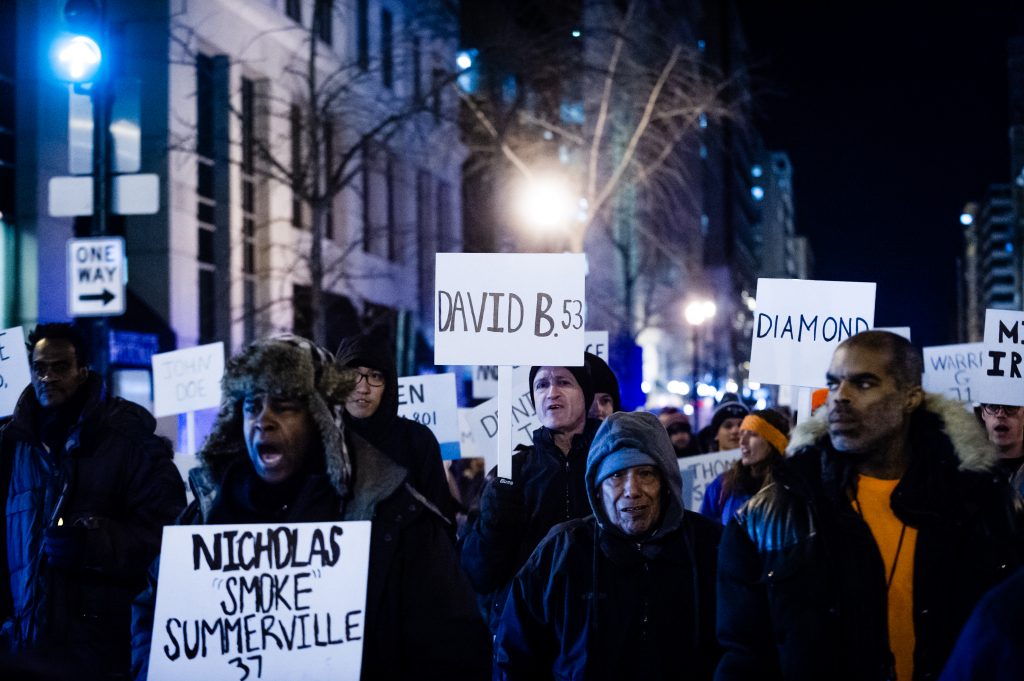
To see a photo essay on the resilience of people experiencing homelessness in Washington, D.C., click here.
Reginald Black, Eric Falquero, and Sean McBride contributed reporting.
Robert Warren is an artist and vendor for Street Sense Media in Washington, D.C. He has lived on the streets twice in his life.
Joseph Young is a photographer and journalist living in Washington, D.C. His photography and journalism has appeared in The Washington Post Magazine, The Washington Times, Washington Afro-American Newspaper and The Washington Informer.
Community Based News Room publishes the stories of people impacted by injustice and aspiring for change. Do you have a story to tell? Please contact us at CBNR. To support our Community Based News Room, please donate here.
